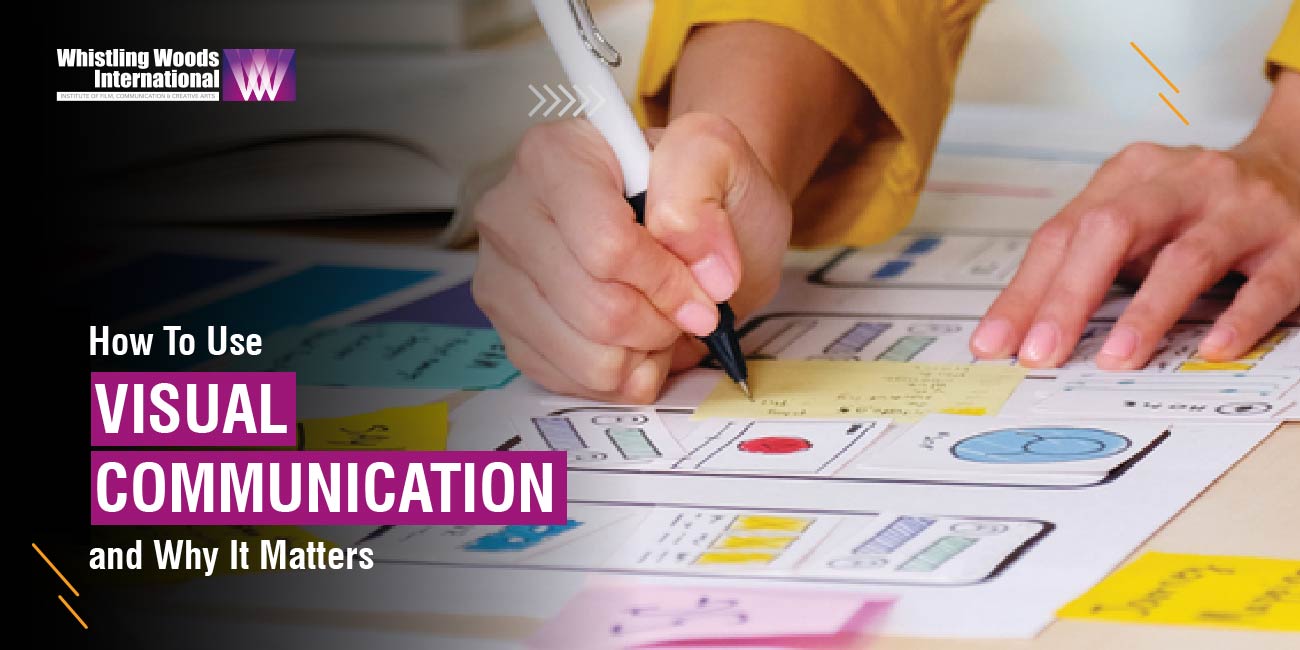The attention span in the bustling digital landscape of the 21st century is fleeting and information overload is the norm. The art of effective communication has never been more critical.
Visual Communication enters as a dynamic and impactful tool, transcending language barriers and captivating audiences. With its help, we as a society, have the ability to leave lasting impressions.
In this blog, we will delve into the advantages of using visual communication, exploring its intricacies and why it matters in today’s fast-paced world.
Understanding Visual Communication
Visual communication involves conveying information through visual elements, such as images, charts, graphs, and design. It is a powerful medium that appeals to our innate visual senses, making complex ideas more accessible and engaging.
From ancient cave paintings to modern infographics, visual communication has evolved with human civilisation, adapting to various mediums and technologies.
Advantages of Using Visual Communication
1. Immediate Understanding
Visuals have the remarkable ability to convey complex messages quickly. A well-crafted visual can communicate information in a fraction of the time it takes to read text. In a world where time is of the essence, this immediate understanding is invaluable.
2. Universal Appeal
Visuals transcend linguistic and cultural boundaries. An image or graphic can convey emotions, concepts, and ideas without the need for translation. This universality makes visual communication a potent tool in our globally connected world.
3. Enhanced Retention
Studies consistently show that people remember visuals better than text. The combination of images and text creates a more memorable and impactful message. For businesses and educators alike, this means increased retention of key information.
4. Increased Engagement
Visuals are inherently more engaging than text alone. Whether it’s a captivating image, an infographic, or an interactive design, visual content captures attention and keeps the audience hooked. In an era of content saturation, the ability to stand out is a significant advantage.
Visual Communication in the Digital Age
With the rise of social media, smartphones, and the digital realm, visual communication has become omnipresent. From brand storytelling to social activism, visuals are the driving force behind impactful online narratives. Social media platforms like Instagram and Pinterest thrive on visual content, proving that a compelling image is worth a thousand words in the digital landscape.
1. Social Media Marketing
Visuals dominate social media marketing strategies. Successful social media campaigns understand the power of visual storytelling.
Eye-catching graphics, videos, and infographics grab users’ attention in crowded feeds, effectively conveying brand messages and fostering engagement.
2. Website Design
In the competitive online space, website design is a make-or-break factor. Visually appealing websites with intuitive navigation enhance user experience and encourage longer visits. From e-commerce platforms to news websites, visual elements play a crucial role in shaping user perception.
3. Storytelling and Branding
Visuals are the backbone of effective storytelling and branding. Logos, colour schemes, and design elements contribute to a brand’s identity, creating a visual language that consumers associate with the brand’s values and messaging.
Why Visual Communication Matters
1. Grasping Complex Information
In professional settings, conveying complex information is a common challenge. Visuals simplify intricate data, making it comprehensible for diverse audiences. Charts, graphs, and diagrams transform numerical data into digestible insights.
2. Navigating Attention Economy
In the age of the attention economy, where consumers are bombarded with information, grabbing and retaining attention is a strategic imperative. It offers a solution by providing a quick and engaging way to convey messages.
3. Building Emotional Connections
Visuals have the power to evoke emotions, whether it’s a heartwarming photograph, a striking design, or a compelling video. Emotional connections enhance the impact of communication, fostering a sense of connection between the communicator and the audience.
4. Adaptability Across Industries
Visual communication is a versatile field that has applications across various industries. From education to marketing, healthcare to entertainment, the ability to convey information visually is a universal need. Professionals equipped with skills become assets in their respective fields.
Harnessing the Power of Visual Communication
For those aspiring to master the art of visual communication, education becomes a vital stepping stone. Enrolling in a visual communication design school equips individuals with the skills and knowledge needed to navigate the dynamic landscape of visual communication.
1. Practical Skills
A comprehensive visual communication design course goes beyond theory, providing hands-on training in graphic design, multimedia, and other essential skills. Practical experience prepares students to apply their knowledge in real-world scenarios.
2. Industry-Relevant Curriculum
A visual communication design school with an industry-relevant curriculum ensures that students are up-to-date with the latest trends and technologies. This knowledge is crucial in an ever-evolving field like visual communication.
3. Networking Opportunities
A quality visual communication design school fosters a collaborative environment, allowing students to connect with industry professionals and fellow students. Networking opportunities enhance career prospects and provide insights into the diverse applications of visual communication.
Whistling Woods International: Fostering Visual Storytellers
Now, from the perspective of Whistling Woods International’s School of Design, we understand the transformative potential of visual communication. Our BDes in Visual Communication Design empowers students with a comprehensive understanding of this dynamic field.
Through a curriculum that balances theory and practicals, we aim to nurture the next generation of visual communicators who can craft compelling narratives, captivate audiences, and make a meaningful impact.
In conclusion, visual communication is not merely a tool; it is a language that transcends words, conveying messages with depth and impact. Whether you’re a marketer aiming to capture attention, an educator simplifying complex concepts, or a brand crafting its identity, the advantages of using visual communication are undeniable.
As the world becomes increasingly visual, the ability to harness the power of visuals becomes a key competency for effective communication in the digital age. Explore the possibilities, master the art, and let it be the conduit for your ideas and stories.

